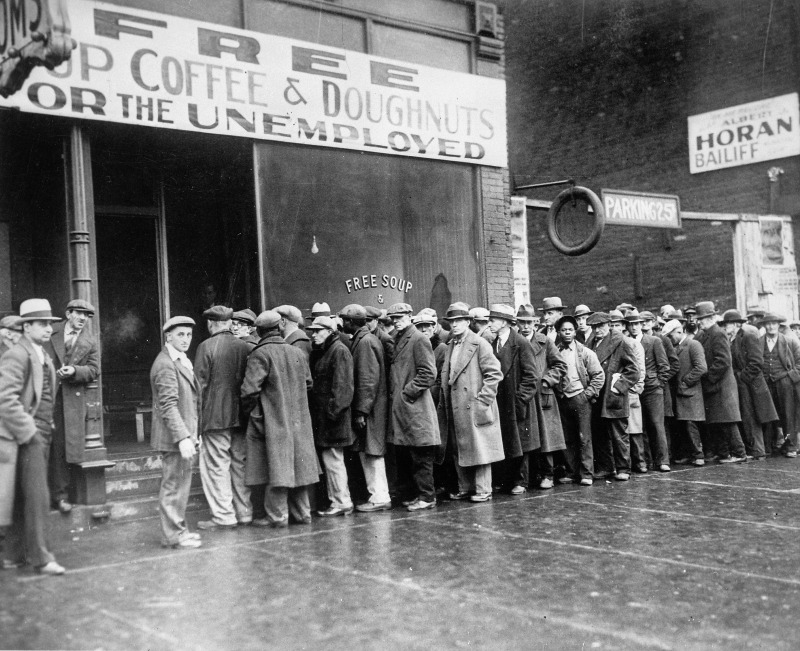
The Great Depression: America's Biggest Economic Disaster
by Valeria Moreno Lopez, age 15
One of the worst economic crises in American history began almost 100 years ago. On October 29, 1929, called “Black Tuesday,” the stock market crashed and led to approximately 10 years of economic failure and psychological trauma known as the Great Depression.
Before the Great Depression, people enjoyed lively and wild lifestyles over the decade of the 1920s. Known as the “Roaring 20s,” this was a time when many Americans lived carefree and the economy grew quickly, changing the lives of citizens. Automobiles, radios, telephones, and such were sold and bought; clubs and exclusive parties with jazz music became popular; women abandoned conservative fashions; and the country’s economic prosperity shone brightly. Life was good. Until investors, who had built their wealth by purchasing shares of companies in the stock market, panicked on Black Tuesday.
The stock market crash in October 1929 took many people by surprise. It was caused by a combination of factors, such as rising interest rates, declining consumer spending, and overproduction of homes, which led to a decrease in housing construction. Some investors took notice of these trends, and began to sell their stocks. As more and more investors followed suit, the stock prices plummeted. Eventually, the stock market crashed completely, losing 11% of its value in one day, and 90% in a year.
During that time, President Herbert Hoover’s administration was not a huge help to the people affected the most by the Great Depression. People who lived in poverty before the stock market crash experienced even fewer opportunities to earn money. President Hoover believed in individualism, which is being independent and reliant on oneself, so he did not think the government should provide relief to those in poverty. Historians argue that he underestimated the gravity of this crisis, and said it was “a passing incident in our national lives” that was going to last 60 days. The president was highly blamed for the Great Depression, and was often mocked due to his lack of caring and responsibility at the beginning.
After Hoover’s presidency, New York governor Franklin D. Roosevelt (FDR) was elected and stepped up to create the “New Deal” in 1933. It was a series of programs, public works projects, financial reforms, and regulations run by a liberal political alliance. Congress passed the Emergency Banking Relief Act, which helped revive the banking system. All of this gave hope to the millions of hopeless Americans who had lost faith in their country. It wasn’t until the start of WWII that millions of unemployed Americans began to recover their jobs and the economy stabilized.
The Great Depression changes the relationship between the government and the people. During FDR’s presidency, new laws and policies were put in place to prevent the crisis from reoccurring. After the Great Depression ended, the some New Deal protection services remained, such as social security, which is still in use today.
[Sources:
American Experience
;
Britannica
]

